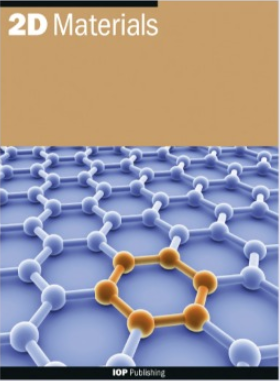Optical signatures of charge- and energy transfer in TMDC/TMDC and TMDC/perovskite heterostructures
IF 4.5
3区 材料科学
Q2 MATERIALS SCIENCE, MULTIDISCIPLINARY
引用次数: 0
Abstract
Heterostructures based on two-dimensional transition metal dichalcogenides (TMDC) are highly intriguing materials because of the layers' pronounced excitonic properties and their nontrivial contributions to the heterostructure (HS). These heterostructures exhibit unique properties that are not observed in either of the constituent components in isolation. Interlayer excitons, which are electron-hole pairs separated across the heterostructures, play a central role in determining these heterostructure properties and are of interest both fundamentally and for device applications. In recent years, a major focus has been on understanding and designing heterostructures composed of two or more TMDC materials. Less attention has been paid to heterostructures composed of one TMDC layer and a layer of perovskite material. A central challenge in the understanding of HS properties is that basic measurements such as optical spectroscopic analysis can be misinterpreted due to the complexity of the charge transfer dynamics. Addressing these aspects, this review presents an overview of the most common and insightful optical spectroscopic techniques used to study TMDC/TMDC and TMDC/halide perovskite HSs. Emphasis is placed on the interpretation of these measurements in terms of charge transfer and the formation of interlayer excitons. Recent advances have started to uncover highly interesting phenomena, and with improved understanding these heterostructures offer great potential for device applications such as photodetectors and miniaturized optics.TMDC/TMDC 和 TMDC/perovskite 异质结构中电荷和能量转移的光学特征
基于二维过渡金属二掺杂化合物(TMDC)的异质结构是一种非常有趣的材料,因为各层具有明显的激子特性,而且它们对异质结构(HS)的贡献并非微不足道。这些异质结构表现出独特的特性,而这些特性在单独的组成成分中是无法观察到的。层间激子是跨异质结构分离的电子-空穴对,在决定这些异质结构特性方面起着核心作用,在基本原理和器件应用方面都具有重要意义。近年来,人们主要关注如何理解和设计由两种或两种以上 TMDC 材料组成的异质结构。人们对由一层 TMDC 和一层包晶材料组成的异质结构关注较少。了解异质结构特性的一个核心挑战是,由于电荷转移动力学的复杂性,光学光谱分析等基本测量方法可能会被误解。针对这些问题,本综述概述了用于研究 TMDC/TMDC 和 TMDC/ 卤化物包晶氢氧化物的最常见、最有见地的光学光谱技术。重点在于从电荷转移和层间激子形成的角度解释这些测量结果。最近的研究进展已经开始揭示出一些非常有趣的现象,随着对这些异质结构理解的加深,它们为光电探测器和微型光学器件等设备应用提供了巨大的潜力。
本文章由计算机程序翻译,如有差异,请以英文原文为准。
求助全文
约1分钟内获得全文
求助全文
来源期刊

2D Materials
MATERIALS SCIENCE, MULTIDISCIPLINARY-
CiteScore
10.70
自引率
5.50%
发文量
138
审稿时长
1.5 months
期刊介绍:
2D Materials is a multidisciplinary, electronic-only journal devoted to publishing fundamental and applied research of the highest quality and impact covering all aspects of graphene and related two-dimensional materials.
 求助内容:
求助内容: 应助结果提醒方式:
应助结果提醒方式:


